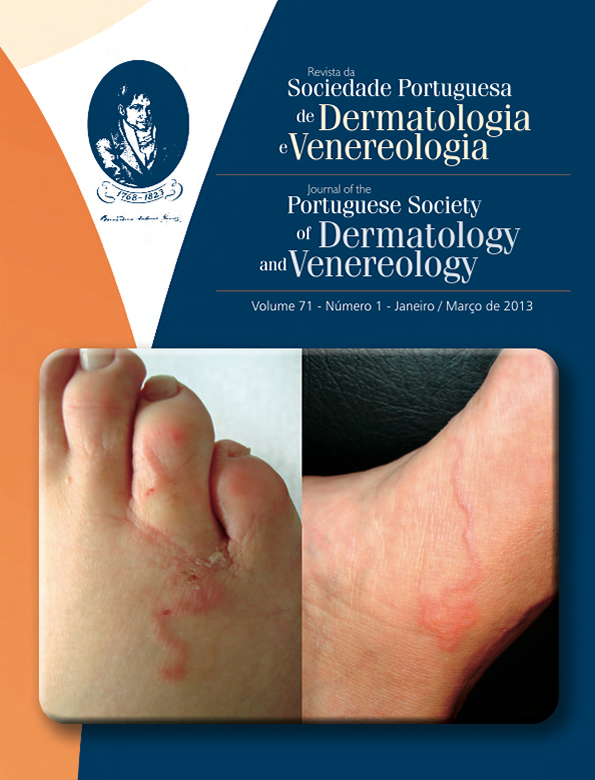PHOTOTHERAPY OF RENAL PRURITUS AND OF PRURITUS ASSOCIATED WITH HIV INFECTION
Abstract
Introduction and Objectives: Phototherapy (UVB alone or in combination with UVA) has been used suc- cessfully in the treatment of severe pruritus associated with chronic kidney disease (CKD) and human immunodeficiency virus (HIV) infection. This study was performed to evaluate the efficacy and safety of a combination of broad band (BB) - UVB and UVA in the control of intractable renal and HIV pruritus.
Material and methods: Eighty three patients (55 with renal pruritus and 28 associated with HIV infection) were included in this retrospective study. Light treatments with UVAB were given three times a week. The initial UVB dose was 20 to 30mJ/cm2 (70% of the MED) increased by 30 mJ/cm2 at each subsequent session, until erythema or relief of pruritus was obtained. The initial and subsequent UVA doses were selected based on the skin type and the upper limit was set at 6J/cm2.
Results: The 55 patients with renal pruritus (33 males and 22 females) had a mean age of 57,7 years, a mean duration of CKD of 8,7 years and pruritus for a mean of 27,8 months; they received an average of 11,1 treatments, 22,9J/cm2 of UVA and 1900mJ/cm2 of UVB; the patients reported appreciable relief of pruritus after 5 treatments and complete resolution at the end of the phototherapy cour- se; the patients were still in remission after a mean follow-up period of 11,2 months. The 28 patients with HIV infection (18 males and 10 females) had a mean age of 40,8 years, were discovered to be seropositive for a mean period of 2,5 years, generalized itch for 13,4 months and a mean CD4 cell count of 177 cells/μL; they received an average of 12,1 treatments, 24,3J/cm2 of UVA and 2000mJ/cm2 of UVB; 21 patients reported appreciable relief of pruritus after 5 treat- ments with complete resolution at the end of the phototherapy course and still in remission after a mean follow-up period of 13,4 months. The only side-effects reported were moderate hyperpigmentation and slight erythema. No deleterious effects on immune function were detected in the HIV-infected patients.
Conclusion: The results suggest that combined BB-UVB and UVA is efficacious and safe in the control of intractable renal and HIV pruritus.
KEYWORDS – AIDS-related opportunistic infections; HIV infections; Pruritus; Ultraviolet therapy.
Downloads
All articles in this journal are Open Access under the Creative Commons Attribution-NonCommercial 4.0 International License (CC BY-NC 4.0).








